Want a better way to scale your Facebook ad campaigns? Wondering how best to allocate ad spend to your Facebook lookalike audiences?
In this article, you'll learn how to scale Facebook ads by combining strategic bid capping with Facebook lookalike audiences.
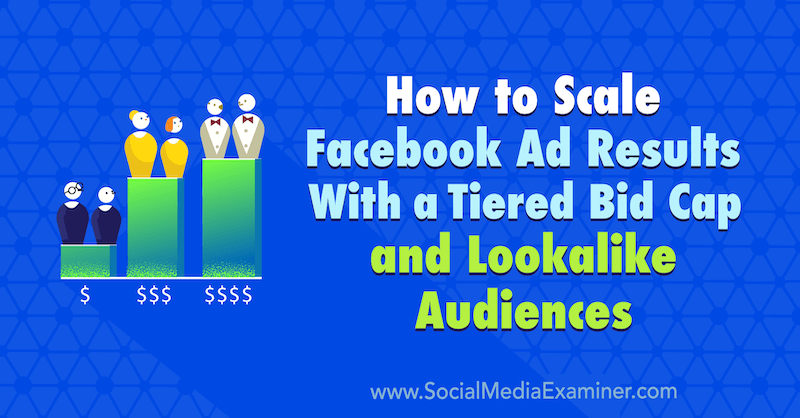
Why Scale Facebook Lookalike Audiences With a Tiered Bid Cap?
Imagine the following scenario. For the last 6 months, your business has been seeing a consistent flow of leads from a Facebook ad campaign that has been converting at an average rate of 12%. As your business grows, you decide it's time to add a salesperson to your team so you can continue to scale your pipeline while sustaining your current lead-to-sales conversion rates.
With a goal of generating another 15 leads per day, you create a broader Facebook lookalike audience segment, expanding from a 1% lookalike to a 5% lookalike. However, you soon realize that although you're attracting lower-cost leads, your new team member has been having a hard time converting the new leads.
At first, you believe it's solely due to the salesperson's newness to the company and you expect his performance will improve over the coming weeks. Despite your patience, though, he only manages to convert about 5% of the incremental lead volume.
You decide to route some of the 5% lookalike leads to your top sales associate to validate the issue. However, you're shocked when your top salesperson also hovers around a 5% conversion rate.
This phenomenon is common when expanding your lookalike audience because you sacrifice performance in broadening the percentage of the audience size. You might not see the impact in your standard media metrics (such as click-through rate [CTR] and cost per click [CPC]), but you'll see the decrease in performance for action metrics like conversions.
This diminishing return is simply a factor of a lower number of matching characteristics between your initial audience source (your email list) and the audience Facebook builds. The tradeoff is that you're able to increase your audience size, and your lookalike approach should still be of greater impact than a more basic interest and behavior strategy.
Lookalike targeting allows you to bypass the arduous process of testing interest and behavior options on Facebook and its owned properties (Instagram and Messenger). Instead, you can simply upload an email list from previous purchasers of your product or service, and/or choose to model an audience from high-intent website activity (top 25% of time on site), among other options, to increase audience traffic into your funnel.
A tiered bid cap approach lets you weight the value of each lookalike audience distinctly at the bid level. It gives you more control and can help you scale your Facebook ads while maintaining a strong pipeline of qualified leads.
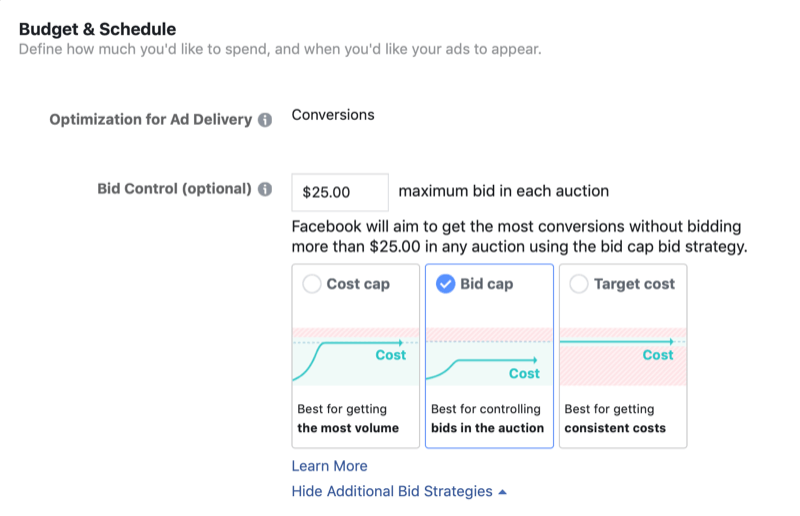
With a bid cap, the algorithm will serve ads more aggressively to users it believes it can convert under your maximum bid and won't bid over your specified amount. This option gives you the most control to drive predictable leads without going over on cost.
Now let's look at how to use this tiered-bid approach to drive higher-converting leads for your Facebook campaigns.
#1: Establish Your Maximum Cost Per Lead
Your maximum cost per lead (CPL) is the most you're willing to pay for a lead from your Facebook ad campaign. This is what you'll use for your 1% lookalike audience because it will be the highest-qualified audience and easiest to convert into paying customers.
Get World-Class Marketing Training — All Year Long!
Are you facing doubt, uncertainty, or overwhelm? The Social Media Marketing Society can help.
Each month, you’ll receive training from trusted marketing experts, covering everything from AI to organic social marketing. When you join, you’ll also get immediate access to:
- A library of 100+ marketing trainings
- A community of like-minded marketers
- Monthly online community meetups
- Relevant news and trends updates
Marketing teams will often work with the sales and finance departments to understand the business economics and establish this number. However, if you're unsure of how to arrive at your maximum bid, you can use a formula to determine your maximum CPL. You'll need to know:
- Cost of customer acquisition (this is the cost of your Facebook ads)
- Average conversion rate (divide the number of sales by the number of leads)
Now multiply these two variables to determine your maximum CPL:
For example, if your cost of customer acquisition is $100 and your average conversion rate is 8%, your maximum CPL is $8.
Essentially, you map out the cost to attract a lead on Facebook (using historical campaign performance) and multiply that by your average conversion rate. In addition, you'll need to consider the economics of your business to ensure that you can still be profitable with your max CPL.
If you've not previously run any Facebook campaigns, consider first testing a 1% lookalike audience strategy with an automatic bid and gauge the CPL for that campaign before using the above framework.
#2: Determine a Tiered CPL Bid Cap
Once you've established the highest dollar amount you can pay for a lead, decrease your max CPL by about 15% with each increment in your lookalike audience size.
For example, if you're paying $25 for your 1% lookalike, set your max CPL at $21 for a 2%–3% lookalike, $18 for a 4%–5% lookalike, and $10 for a 6%–10% lookalike.
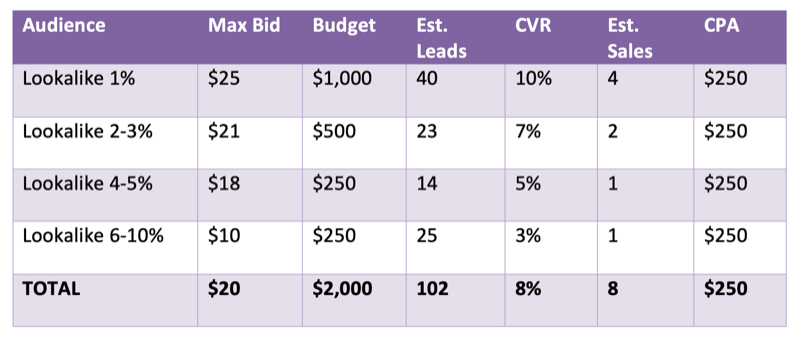
You might be wondering why you'd want to expand the audience to the broader 6%–10% lookalike if the highest conversion rate is for the lookalike 1% segment.
The question is fair, but remember that this is a strategic framework to scale both audiences and performance. Your lookalike audience size will be capped at a maximum of 2.1M users if you're advertising in the U.S. market, and the incremental lookalike audiences will help you reach more qualified audiences beyond that.
Layer Broader Lookalike Audiences With Additional Targeting
If you're looking to scale into the 6%–10% lookalike audience sizes, add more audience parameters to further mitigate the diminishing return of the broader audience.
A simple method to accomplish this is to add interest and/or behavior options to the audience segment.
Here are a few behavior qualifiers that I use:

Discover Proven Marketing Strategies and Tips
Want to go even deeper with your marketing? Check out the Social Media Marketing Podcast! Publishing weekly since 2012, the Social Media Marketing Podcast helps you navigate the constantly changing marketing jungle, with expert interviews from marketing pros.
But don’t let the name fool you. This show is about a lot more than just social media marketing. With over 600 episodes and millions of downloads each year, this show has been a trusted source for marketers for well over a decade.
- Financial: Household Income via Zip Code targeting
- Tech-savvy: Early adopters of technology
- Demo: Household with kids
The one caveat is that if you're seeing strong results in your broader lookalike audiences and want to scale further, you should also test without the parameters to gauge additional learnings.
#3: Build Your Facebook Lookalike Audiences
Once you've determined your bids, it's time to build your Facebook conversions campaign and start scaling your leads with performance.
The first step is to build your Facebook lookalike audiences. In Ads Manager, navigate to the Audiences dashboard. Then click Create Audience and choose Lookalike Audience from the drop-down menu.
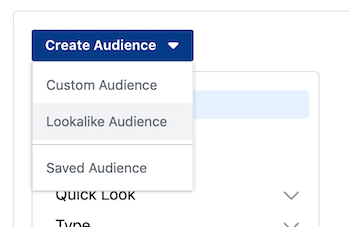
In the Create a Lookalike window, select the lookalike source, audience location, and audience size ranges you want to use. When creating lookalikes, my recommendation is to start with smaller increments and then consider going larger. In this example, you're creating three lookalikes: 1%, 1%–3%, and 3%–5%.
When you're done, click Create Audience.
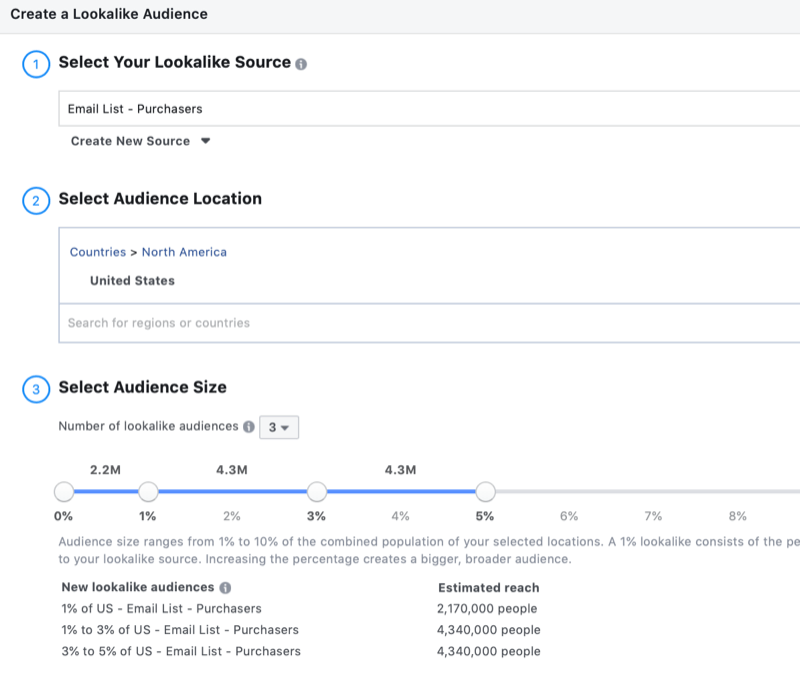
#4: Apply the Tiered Bid Cap to Its Corresponding Lookalike
Once your lookalike audiences populate, create your conversions campaign and select the desired optimization event.
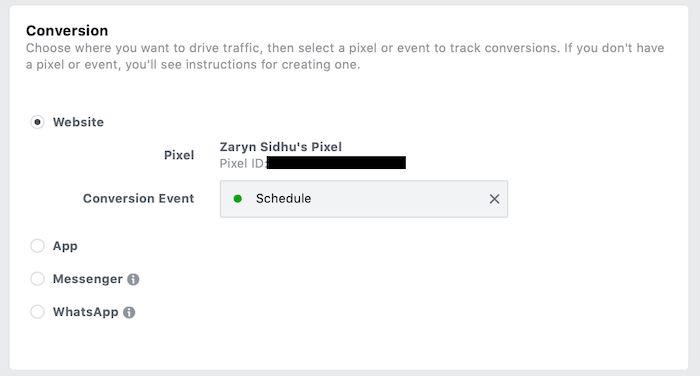
Then build out your audience targeting at the Ad Set level and select the corresponding bid for each audience outlined earlier. Your 1% lookalike gets the highest CPL bid, 1%–3% gets the next highest, and so on.
When you're finished, follow the rest of the setup process as usual and set the campaign to go live.
#5: Optimize Your Facebook Ads to Improve CPL Further
After your campaign gets approved and goes live, wait for at least 3–4 days of ad delivery before you begin to optimize.
Keep in mind that making changes to the bid levels once the campaign has been activated will reset the learning phase of the algorithm and negatively impact the delivery of your ads for the remainder of the campaign run.
I recommend focusing your initial optimizations around budgets, audiences, and creatives. To visualize this, if the 1%–3% lookalike audience segment is performing really well, consider increasing the budget to attract more leads.
As with all Facebook campaigns, it's crucial to review and glean insights from the performance of the audiences. This will ensure you can maximize the ROI of your campaigns and truly see strong results as you scale your lead volume.
Depending on the scope of your investment and the nature of your business, consider optimizing with a greater—or lesser—frequency.
Optimize Your Facebook Bids by Placement
Post-campaign, you have another opportunity to expand on the framework of the audience-tiered bid. To go another layer deeper, optimize your bids by placement as well. This tactic will help you to continue to drive down the CPL while improving the quality of the leads your sales team is receiving.
Here's an example of how you can achieve this at the placement level for the 1% lookalike audience segment, which should be your highest max CPL and best performer.
- Facebook News Feed Desktop: $35
- Facebook News Feed Mobile: $25
- Instagram News Feed: $28
- Instagram Stories: $21
It's important to review campaign performance and align your bids by what's actually driving the desired results. If you're unsure of which placements performed best, leverage Facebook's offline sales conversion tool. It allows you to upload a list of purchasers that it can match against your campaign to reveal which leads turned into sales.
First, you need to create a new offline event set, which is where Facebook will deposit and track your offline conversion information.
To do this, navigate to Offline Events.
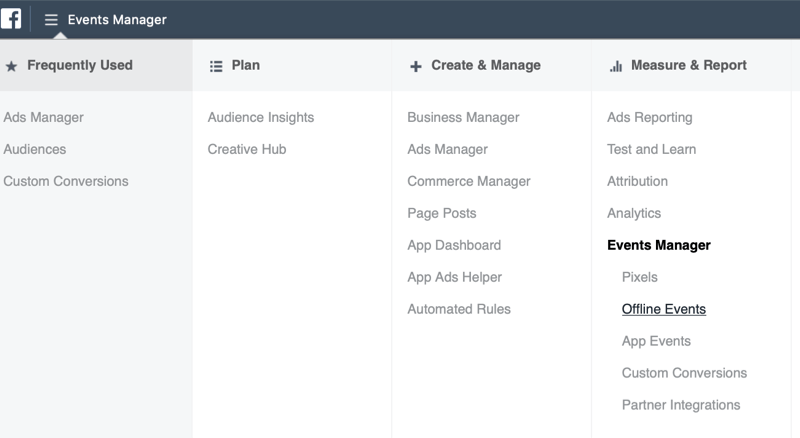
Then follow the prompts to set up your offline event. Once you've created it, click Upload Offline Events and upload a CSV file with your sales so Facebook can start matching your sales.
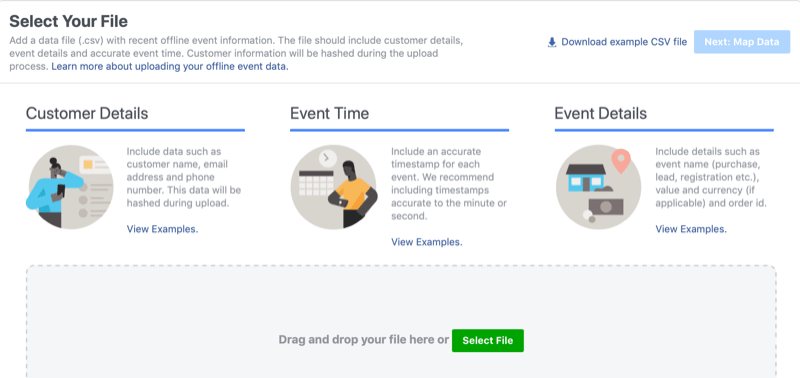
As a best practice, upload a list of purchasers weekly, with a minimum frequency of a monthly upload, because Ads Manager won't be able to match sales past the 28-day mark.
Your CSV upload file should contain the following fields:
- First Name
- Last Name
- Event (i.e., lead)
- Time Stamp (should include both date and time)
Once you've uploaded your file, map the data in Facebook and then wait for your audience to be matched. You'll see your audience match rate on the screen.

Then you're free to return to Ads Manager to begin reviewing performance at an audience and placement level to further improve the ROI from your Facebook ads.
Conclusion
Since 2013, Facebook advertisers have benefited from the power of lookalike audience targeting. Not only are lookalikes more effective, but they're also time-saving for businesses that don't have a crystal-clear picture of their audience profile.
This tiered bid cap framework will help you scale a lookalike audience strategy like a pro while driving qualified leads and higher conversion rates.
What do you think? Will you try this tiered bid cap strategy with Facebook lookalike audiences? Share your thoughts in the comments below.
More articles on Facebook ads:
- Discover six Facebook ad mistakes marketers make and how to avoid them.
- Find a step-by-step guide for creating a complete Facebook ad funnel that works.
- Explore seven ways to scale your Facebook ad campaigns.
Attention Agency Owners, Brand Marketers, and Consultants

Introducing the Marketing Agency Show–our newest podcast designed to explore the struggles of agency marketers.
Join show host and agency owner, Brooke Sellas, as she interviews agency marketers and digs deep into their biggest challenges. Explore topics like navigating rough economic times, leveraging AI, service diversification, client acquisition, and much more.
Just pull up your favorite podcast app, search for Marketing Agency Show and start listening. Or click the button below for more information.

